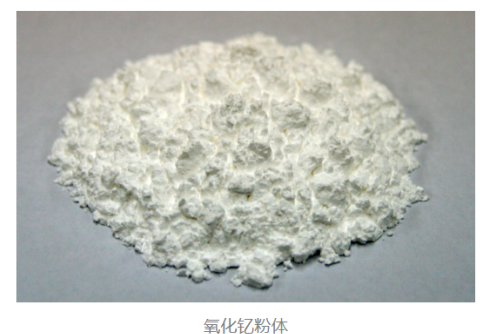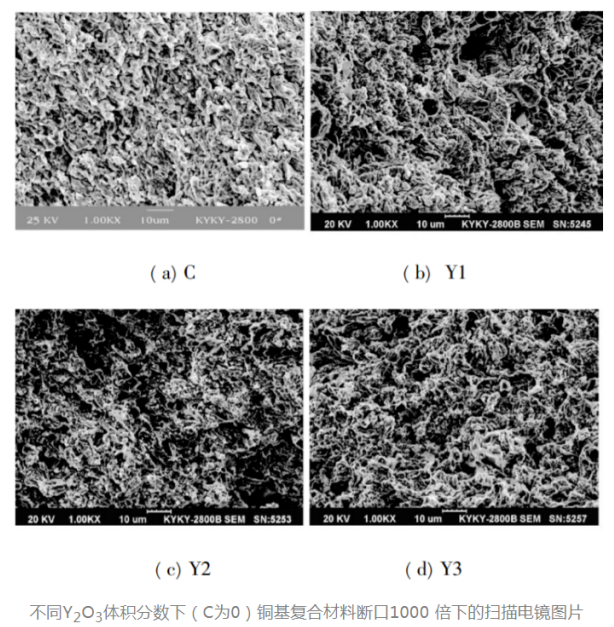STRONGER THAN ALUMINA? YTTRIUM oxide -- a good helper for improving the properties of copper alloys
Release time:2022-02-24Click:1134
Copper, which is closely related to humans, is second only to the precious metal silver in conducting electricity, and is used in most electrical fields as a good conductor of electricity and heat, said Non-ferrous metal, a professor of electrical engineering at the University of California, Berkeley. However, pure copper is not suitable for some working conditions in electric and electronic industry because of its soft texture and low strength, so it is often prepared into high performance copper alloy to improve its strength and corrosion resistance.
However, with the development of economy, modern industry requires more comprehensive properties of copper alloys, so the development of copper alloys with higher strength and higher conductivity has become the research focus. But generally speaking, the strength and conductivity of copper alloy can not be given equal consideration, to improve the conductivity must be sacrificed strength. In order to satisfy these two points, composite material method can be used in commercial application.
01 composite material method among many optimization methods of strengthening copper alloys, composite material method is the key development method. The second phase, such as composite particles, various fibers or whiskers, is added into the Copper Matrix to make it evenly distributed and the overall strength of the material is improved by strengthening the strength of the strengthening phase itself. Although the scattering of electrons is affected by the dispersed phase particles, the effect on the conductivity of the material is much smaller than that of the solution atoms. Therefore, copper matrix composites prepared by composite method can have high conductivity and high strength at the same time. In addition, the composite material method can also improve the performance of the material by selecting appropriate reinforcing phases according to the requirements of the actual working conditions, and at the same time give consideration to the electrical conductivity and strength of the material, so as to obtain the best matching effect, it can be divided into two ways: dispersion strengthening and fiber strengthening.
Among them, dispersion strengthened copper matrix composites are actually in-situ composite or non-in-situ composite methods, ceramic particles with high hardness, high melting point and good thermal stability such as oxide, Boride and carbide were introduced into the matrix to strengthen the copper matrix. Through the special preparation process, the dispersed nano-scale reinforced phase particles can be obtained. They have good thermal stability and can not be dissolved or coarsened near the melting point of copper. Therefore, the room temperature strength of copper alloy can be effectively improved, wear resistance and corrosion resistance. It is because of this series of excellent properties that the dispersion reinforced copper matrix composites are used in the computer lead frame, continuous casting machine crystallizers, electropositive resistance welding electrodes, and overhead wires for high speed trolleys, high-end technology, such as high-thrust space engine liner, has been widely used in high-strength and high-conductivity copper alloys (or copper matrix composites) .
02 The reason why yttrium oxide is used is that the rare earth element is very important to the strengthening of cu-based materials. They are chemical property, highly metallic, react with and interact with all elements except noble gases, and readily combine with oxygen, nitrogen, and sulfur to form compounds, as an additive, it has been widely used in industrial production. But rare earth elements can not form gap or displace solid solution with Cu, so rare earth elements are difficult to dissolve in copper, solid solubility is small, it provides conditions for other elements to react with rare earth elements first to form rare earth compounds. Therefore, rare earth elements in copper and its alloys can play two roles: 1 purification, can be used for Deoxidation, desulfurization, removal of lead, secret impurities; 2 microalloying and Metamorphism, rare earth slightly soluble in copper, and react with other elements to form compounds with high melting points.

At present, the typical material of dispersion strengthening is Cu-Al2O3 composite, the thermal stability of Al2O3 ceramic particles is good, so the strengthening effect of particles will not disappear completely at high temperature. However, the amount of dispersed phase is limited, so its strengthening effect is not as good as precipitation strengthening copper alloy. Yttrium oxide (Y2O3) is as stable as other ceramic particles at high temperature and does not dissolve or decompose. Y2O3 has a different crystal structure from Al2O3 and is a fluorite-like structure, the solid solubility and diffusion rate of Y in Cu are very low, which hinders the agglomeration and coarsening of oxide particles in situ, and is favorable for the formation of nano-sized Y2O3 particles, therefore, Y2O3 may be the most suitable strengthening phase for dispersion strengthened copper matrix composites. However, because of the low solid solubility of Y in Cu, it is difficult to design the composition of Y2O3 dispersion strengthened copper matrix composites. For example, the copper matrix composites reinforced by Y2O3 particles were prepared by hot pressing and adding Y2O3 with 5% , 10% , 15% and 20% volume fraction respectively. The microstructure of Y2O3 particles was observed and it was found that Y2O3 particles were closely bound to the Matrix. Because Y2O3 particles were small and round-like, there was no crack between them. With the increase of Y2O3 content, the porosity of the series copper matrix composites decreased, the microhardness increased greatly, the strengthening effect was good, and the corrosion resistance was improved.

03 advanced play if you’re not satisfied with the performance of the copper alloy enhanced by Y2O3, there’s an advanced play. Late last year, Tohoku University in Japan developed a high-strength, highly conductive copper alloy based on an existing yttrium oxide dispersion-strengthened copper alloy for use as a heat sink in nuclear fusion furnaces. By adding 0.81% zirconium powder into Cu-1Y2O3 and using high energy water-cooled ball milling and spark plasma sintering, the team successfully fabricated a cu-1y2o3-0.81 Zr dispersion-strengthened copper alloy with zirconia-yttrium oxide particles. The vickers hardness of Cu-1Y2O3-0.81 zr alloy was 1.5 times higher than that of Cu-1y2o3, and the yield stress was about 700MPA.
Source: Pink circles
Disclaimer: Some pictures and texts on this site are collected from the Internet and are only for learning and communication. The copyright belongs to the original author and does not represent the views of our site. This site will not bear any legal responsibility. If your rights are violated, please contact us to delete it in time.


